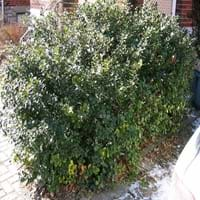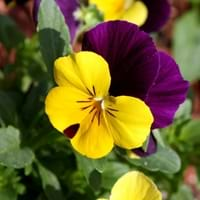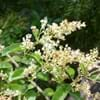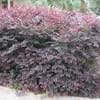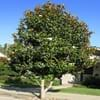Life Span
Perennial
Annual
Type
Broadleaf Evergreen
Flowering Plants
Origin
Hybrid origin
Asia, Europe
Types
Ilex abscondita, Ilex aculeolata, Ilex affinis
Blue & Purple Rain viola, Bowles' Black pansy, Fizzy Lemonberry pansy, Karma Yellow pansy
Habitat
Subtropical climates, Woodland Garden Secondary, Woodlands
Fields, gardens, meadows, rocky outcrops, wastelands
USDA Hardiness Zone
5-9
4-8
AHS Heat Zone
Not Available
9-1
Sunset Zone
21,22
A1, A2, A3, H1, H2, 1a, 1b, 2a, 2b, 3a, 3b, 4, 5, 6, 7, 8, 9, 10, 11, 12, 13, 14, 15, 16, 17, 18, 19, 20, 21, 22, 23, 24
Habit
Oval or Rounded
Cushion/Mound-forming
Minimum Height
Not Available
Flower Color
White
Blue, Orange, Pink, Red, White
Flower Color Modifier
Bicolor
Bicolor
Fruit Color
Red
Not Available
Leaf Color in Spring
Dark Green
Green
Leaf Color in Summer
Dark Green
Green
Leaf Color in Fall
Dark Green
Green
Leaf Color in Winter
Dark Green
Green
Plant Season
Spring, Summer, Fall, Winter
Fall, Spring, Summer, Winter
Sunlight
Full Sun, Partial Sun, Partial shade
Full Sun
Type of Soil
Loam
Rich, Well drained
The pH of Soil
Acidic, Neutral
Acidic
Soil Drainage
Well drained
Well drained
Bloom Time
Late Spring
Fall, Spring
Tolerances
Salt
Not Available
Where to Plant?
Container, Ground, Pot
Container, Ground, Pot
How to Plant?
Seedlings, Semi-ripe cuttings
Seedlings
Plant Maintenance
Medium
Medium
Watering Requirements
Requires regular watering
It cannot sustain wet-feet, Keep the ground moist but not water-logged, Requires regular watering, Use and maintain water-efficient soaker hoses
In Summer
Lots of watering
Lots of watering
In Spring
Moderate
Moderate
In Winter
Average Water
Average Water
Soil pH
Acidic, Neutral
Acidic
Soil Type
Loam
Rich, Well drained
Soil Drainage Capacity
Well drained
Well drained
Sun Exposure
Full Sun, Partial Sun, Partial shade
Full Sun
Pruning
No pruning needed, Prune in early spring, Prune in winter, Remove damaged leaves, Remove dead branches, Remove dead leaves, Requires little pruning
Cut or pinch the stems, Prune after flowering, Prune for shortening long shoots, Remove deadheads
Fertilizers
All-Purpose Liquid Fertilizer
All-Purpose Liquid Fertilizer
Pests and Diseases
Red blotch
Aphids, Crown rot, Downy mildew, Gray mold, Mosaic viruses, Powdery mildew, Root rot, Slugs, Snails, Spot anthracnose
Plant Tolerance
Salt
Drought
Flowers
Insignificant
Yes
Flower Petal Number
Single
Single
Foliage Texture
Medium
Medium
Foliage Sheen
Glossy
Matte
Attracts
Birds
Not Available
Allergy
Diarrhea, Mildly Toxic, Vomiting
Not Available
Aesthetic Uses
Cottage Garden, Showy Purposes, Used for making hedges
Beautification, Bouquets, Showy Purposes
Beauty Benefits
Not Available
Not Available
Environmental Uses
Air purification, Food for animals, Food for birds, Wildlife
Air purification
Medicinal Uses
Not Available
Asthma, epilepsy, Heart problems
Part of Plant Used
Fruits
Flowers, Leaves
Other Uses
Food for animals, Used for Landscaping
Not Available
Used As Indoor Plant
No
Yes
Used As Outdoor Plant
Yes
Yes
Garden Design
Feature Plant, Foundation, Hedges, Mixed Border, Screening, Wind Break
Bedding Plant, Feature Plant, Foundation
Botanical Name
ILEX x meserveae 'Blue Princess'
Viola tricolor var. hortensis
Common Name
Blue Princess Holly
Pansy
In Hindi
BluePrincess Holly Plant
स्रीवत
In German
BluePrincess Holly Pflanze
Stiefmütterchen
In French
BluePrincess houx Plante
Pensée
In Spanish
Planta del acebo BluePrincess
Pensamiento
In Greek
BluePrincess Holly Φυτών
πανσές
In Portuguese
BluePrincess Planta Holly
amor-perfeito
In Polish
BluePrincess Holly roślin
Bratek
In Latin
Planta BluePrincess Holly
Cinaede fill
Phylum
Not Available
Anthophyta
Class
Not Available
Magnoliopsida
Order
Aquifoliales
Malpighiales
Family
Aquifoliaceae
Violaceae
Clade
Angiosperms, Eudicots
Not Available
Tribe
Not Available
Not Available
Subfamily
Not Available
Not Available
Number of Species
Not Available
Season and Care of Blue Princess Holly and Pansy
Season and care of Blue Princess Holly and Pansy is important to know. While considering everything about Blue Princess Holly and Pansy Care, growing season is an essential factor. Blue Princess Holly season is Spring, Summer, Fall and Winter and Pansy season is Spring, Summer, Fall and Winter. The type of soil for Blue Princess Holly is Loam and for Pansy is Rich, Well drained while the PH of soil for Blue Princess Holly is Acidic, Neutral and for Pansy is Acidic.
Blue Princess Holly and Pansy Physical Information
Blue Princess Holly and Pansy physical information is very important for comparison. Blue Princess Holly height is Not Available and width 180.00 cm whereas Pansy height is 1.50 cm and width 0.75 cm. The color specification of Blue Princess Holly and Pansy are as follows:
Blue Princess Holly flower color: White
Blue Princess Holly leaf color: Dark Green
Pansy flower color: Blue, Orange, Pink, Red and White
- Pansy leaf color: Green
Care of Blue Princess Holly and Pansy
Care of Blue Princess Holly and Pansy include pruning, fertilizers, watering etc. Blue Princess Holly pruning is done No pruning needed, Prune in early spring, Prune in winter, Remove damaged leaves, Remove dead branches, Remove dead leaves and Requires little pruning and Pansy pruning is done Cut or pinch the stems, Prune after flowering, Prune for shortening long shoots and Remove deadheads. In summer Blue Princess Holly needs Lots of watering and in winter, it needs Average Water. Whereas, in summer Pansy needs Lots of watering and in winter, it needs Average Water.
